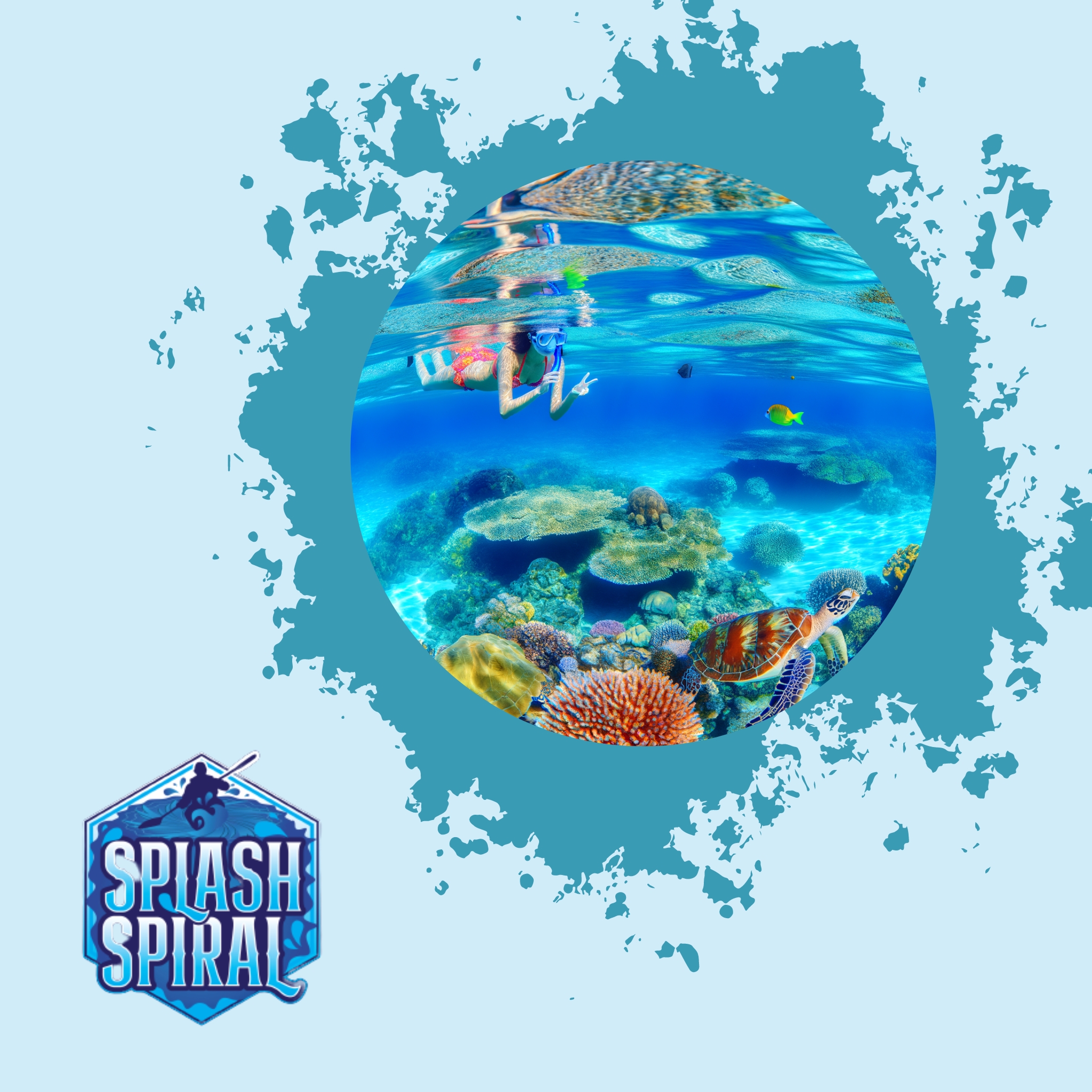
Snorkeling is an exciting, user-friendly way to interact with the vibrant marine life that populates the world's oceans. Few locations on the planet can provide a more stunning backdrop for this activity than Australia's Great Barrier Reef. If you're considering a snorkeling trip to the Reef in December, you're in for quite the underwater adventure. However, before you dive in, it’s crucial to understand the conditions and what to expect. This guide will help prepare you for December snorkeling in the Great Barrier Reef.
Understanding Seasonal Conditions in December
Deciding to snorkel the Great Barrier Reef in December? You're in for a tropical treat, but here's a quick run-through of what to expect.
- Weather Patterns
December marks the beginning of summer in Australia. The Great Barrier Reef enjoys a tropical climate, typically warm and humid. Daytime temperatures hover around 30°C (86°F). However, this month is also the start of the wet season, which means you can expect a mix of sunshine and sudden downpours. Don't worry, though—a little rain won't ruin your snorkeling plans, but it’s smart to pack a light rain jacket just in case.
- Water Temperature
The good news is, the water's warm and inviting, with an average temperature sitting comfortably between 27°C to 29°C (81°F to 84°F). This balmy feel is perfect for beginner snorkelers who might not be used to diving into cooler waters. No wetsuits required here, just slip in and enjoy the natural bathtub.
- Visibility and Potential Challenges
Visibility can be a bit tricky in December. The water may appear slightly cloudy compared to other times of the year, primarily due to increased rainfall and plankton blooms. This can affect how far you can see underwater, typically ranging from 10 to 15 meters (33 to 50 feet), which is still pretty decent for getting a close-up view of marine life. Also, keep an eye out for stingers; jellyfish are more common now, so wearing a stinger suit is a wise precaution. It’s lightweight and offers some peace of mind.
Being aware of these conditions helps you plan ahead. Whether you're basking in the sunshine or navigating through the rain, the underwater marvels of the Great Barrier Reef remain a sight to behold, rain or shine. So get ready for a memorable snorkel donning your mask, fins, and that essential spirit of adventure!
Exploring the Coral Reefs
Overview of December Coral Life
Imagine floating just above a mesmerizing underwater landscape, teeming with vibrant coral formations. In December, the Great Barrier Reef showcases a spectacular palette of colors and life. Despite varying conditions, the corals maintain an impressive display, their vivid hues lighting up the ocean floor.
Coral Features:
- Hard and Soft Corals: Expect to encounter a healthy mix of both types.
- Branching Corals: Resembling fairy-like structures.
- Dome-shaped Corals: Sturdy and robust in appearance.
- Color Range: From soft pinks and yellows to electric blues and purples, creating a stunning underwater mural.
Impact of Seasonal Changes
As December begins, it ushers in the wet season in Queensland, which impacts the coral reefs in various ways:
- Freshwater Runoff: Increased rainfall can temporarily affect visibility due to runoff.
- Nutrient-Rich Waters: Rains often deliver nutrients that nourish and promote coral growth.
- Coral Spawning Events:
- Start of an impressive natural phenomenon where corals release tiny gametes.
- Expands the reef's vibrancy and initiates new life on the ocean floor.
This time offers snorkelers an extraordinary opportunity:
- Witness Coral Lifecycle: View the lifecycle of the reef in real-time.
- Deeper Understanding: Gain insights into the dynamic underwater world.
Encountering Diverse Marine Life
Variety of Marine Species
Diving into the Great Barrier Reef in December is like opening a living kaleidoscope. This time of year, the waters are bustling with a range of fascinating marine species that will leave snorkelers in awe. Among the highlights, expect to encounter:
- Colorful Parrotfish: Munching on coral with their vibrant scales adding to the underwater spectacle.
- Graceful Sea Turtles: Gliding serenely by, a timeless symbol of ocean life.
- Curious Clownfish: Peeking out from their anemone homes, offering a playful sight for snorkelers.
- Iconic Giant Clams and Vibrant Butterflyfish: In full display during December, showcasing the reef's rich biodiversity.
- Majestic Manta Rays: Migrating through the warm waters, frequenting the area during this season.
Each encounter offers a unique insight into the incredible biodiversity of this natural wonder.
Safety and Conservation
When you're immersed in the beauty of the underwater realm, it's important to remember you're a guest in a delicate ecosystem. Here are a few key guidelines to ensure responsible interaction:
- Maintain Distance: Keep a safe distance from marine creatures to avoid disturbing their natural behaviors.
- Avoid Touching Coral: Refrain from touching coral, which is fragile and susceptible to damage.
- Use Reef-Friendly Sunscreen: Protect both your skin and the environment with eco-friendly sunscreen options.
Simple measures like these help preserve the reef's health for future generations. As you enjoy the ocean's splendor, appreciate the vibrant life forms and consider the important role they play in our global ecosystem. Let conservation be part of your snorkeling ethos—an experience that's both meaningful and mindful.
Guided Tours and Their Benefits
Why Choose Guided Tours?
Diving into the Great Barrier Reef's vast underwater world can feel a bit daunting for beginners, which is where guided snorkeling tours really shine. Opting for a guided tour means you'll have experienced professionals leading the way, offering peace of mind and an enriched experience. They know the best spots to hit and the times to do it, ensuring that you get the most out of your time in the water. Moreover, guided tours often include equipment hire, saving you the hassle of purchasing or lugging around your own gear.
There are various options to suit different preferences, from small group excursions to private snorkeling charters for a more personalized adventure. These tours are designed to accommodate all skill levels, so whether you’re a first-timer or looking to hone your snorkeling skills, there's something for you. For those seeking an exclusive experience, consider looking into private snorkeling charters.
Enhancing the Experience
Guided tours do more than just show you around; they deepen your understanding and appreciation of the marine environment. Knowledgeable guides can identify various marine species and explain the intricate relationships within the reef ecosystem, offering insights you might miss on your own. The personalized attention ensures you not only see but also learn about the fascinating underwater world.
Plus, guided tours are a great way to address any uncertainties or questions you might have, from equipment adjustments to techniques that improve your snorkeling comfort. By choosing a tour, you're investing in a more comprehensive snorkeling experience. For further reading on when to make the most of your visit, check out more details on snorkeling in the Great Barrier Reef.
Preparing for Your Snorkeling Adventure
Essential Gear and Safety Precautions
Before you splash into the crystal-clear waters of the Great Barrier Reef, make sure you have the right gear. At its most basic, your snorkeling kit should include a mask, snorkel, and fins. These will ensure you can see underwater clearly, breathe easily, and move effortlessly through the water. If you're prone to chilly spells, consider a lightweight wetsuit or rash guard, which also offers protection from the sun.
Safety is paramount, especially for beginners. Always snorkel with a buddy—it's safer and more fun to share the experience. Pay attention to local guidelines and warnings; marine conditions can change quickly. Also, practice using your equipment before heading out. Knowing how to clear your snorkel and adjust your mask is crucial for a smooth outing. Lastly, apply eco-friendly sunscreen to protect both your skin and the fragile marine environment.
Planning Your Trip
Ensuring your trip is smooth starts with good planning. Consider staying in Cairns or Port Douglas, both popular access points for the Reef. Book accommodations early, as December can be busy due to holiday travelers. Research transportation options to get from your lodging to the dive sites. Many tour operators offer shuttle services or arrange transfers, so it’s worth coordinating these in advance.
Timing your snorkeling outings is also important. Mornings are often the calmest and offer the best visibility, so aim to start early. Consider booking a spot on a boat tour—it adds an extra layer of convenience and accessibility to more remote parts of the Reef. To get the most out of your planning, check out resources that detail diving and snorkeling options, like this guide.
Prepare well, and your snorkeling adventure will surely be a highlight of your Great Barrier Reef experience.
Conclusion
December is a magical time to experience the Great Barrier Reef, with the perfect blend of mild tropical weather and thriving marine ecosystems. While exploring the vibrant coral reefs, you can anticipate warm waters and the chance to meet an array of fascinating marine life. By understanding the seasonal conditions, snorkelers can better appreciate the underwater world and minimize potential challenges like fluctuating visibility.
For beginners, December snorkeling offers a forgiving introduction to this captivating sport. The emphasis on safety and conservation is crucial, ensuring that your interactions with the Reef remain respectful and sustainable. Opting for guided tours can further enhance your adventure, providing deeper insights and ensuring a smoother experience.
So, whether you're planning to spot a flamboyant parrotfish or simply soak in the colorful underwater scenery, remember that your preparation will set the stage for an extraordinary journey. Embrace the adventure, take a deep breath, and get ready to dive—literally and figuratively—into a world like no other. The Great Barrier Reef awaits, ready to show you its wonders one fin kick at a time.







